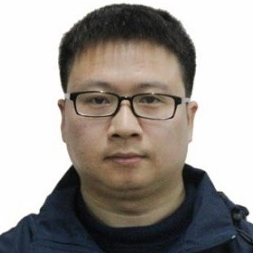Ultrafast Optics and Applications
A special issue of Photonics (ISSN 2304-6732). This special issue belongs to the section "Lasers, Light Sources and Sensors".
Deadline for manuscript submissions: 20 August 2024 | Viewed by 4607
Special Issue Editors
Interests: nonlinear optics; ultrashort optics; mode-locking lasers; pulse compression; integrated optics
Interests: fiber lasers; nonlinear optics; mid-infrared lasers
Special Issues, Collections and Topics in MDPI journals
Special Issue Information
Dear Colleagues,
Ultrafast optics is among the most important areas of optics and deals with ultrafast phenomena, i.e., phenomena which occur at the shortest time scales known in science, ranging from picoseconds to femtoseconds to attoseconds. Ultrafast optics describes the process by which light interacts with matter. Thus, on the one hand, we can use ultrashort pulses to probe ultrafast processes inside matter such as femtosecond dynamics of electrons, light-induced phase changes, chemical reactions, and processes in plasmas. On the other hand, we can use the effect of matter on light to control light amplification, shaping, frequency conversion, and spectrum broadening. As a cutting-edge subject, ultrafast optics has important applications in many fields, covering areas of optical imaging, optical computing, optical sensing and communication, and various types of advanced light sources.
This Special Issue, entitled “Ultrafast Optics and Applications”, will welcome basic, methodological and applied cutting-edge research contributions, as regular and review papers, addressing:
- Efficient methods for the generation of high-order harmonic, attosecond pulse and attosecond pulse spectroscopy;
- Advanced technology of mode-locked laser for high peak power and ultrashort pulses;
- High-energy, short-pulse laser systems in the deep ultraviolet (or extreme deep ultraviolet) and mid-infrared bands;
- The development of ultrafast imaging and technology for coherent X-ray diffraction imaging;
- Advanced industrial laser sources to manufacture and process different materials;
- Ultrafast optical technologies and methods for communication devices, sensors, medical aesthetic tools, etc.
Dr. Chao Mei
Dr. Xinyang Su
Dr. Renlai Zhou
Guest Editors
Manuscript Submission Information
Manuscripts should be submitted online at www.mdpi.com by registering and logging in to this website. Once you are registered, click here to go to the submission form. Manuscripts can be submitted until the deadline. All submissions that pass pre-check are peer-reviewed. Accepted papers will be published continuously in the journal (as soon as accepted) and will be listed together on the special issue website. Research articles, review articles as well as short communications are invited. For planned papers, a title and short abstract (about 100 words) can be sent to the Editorial Office for announcement on this website.
Submitted manuscripts should not have been published previously, nor be under consideration for publication elsewhere (except conference proceedings papers). All manuscripts are thoroughly refereed through a single-blind peer-review process. A guide for authors and other relevant information for submission of manuscripts is available on the Instructions for Authors page. Photonics is an international peer-reviewed open access monthly journal published by MDPI.
Please visit the Instructions for Authors page before submitting a manuscript. The Article Processing Charge (APC) for publication in this open access journal is 2400 CHF (Swiss Francs). Submitted papers should be well formatted and use good English. Authors may use MDPI's English editing service prior to publication or during author revisions.
Keywords
- ultrashort pulses
- mode-locked lasers
- high harmonic generation
- nonlinear effects
- time-resolved spectroscopy
- pump–probe measurements
- optical parametric oscillator
- nonlinear crystal
- optical parametric amplification
- ultraviolet optics







